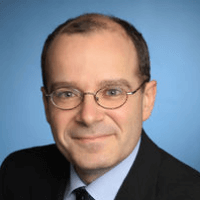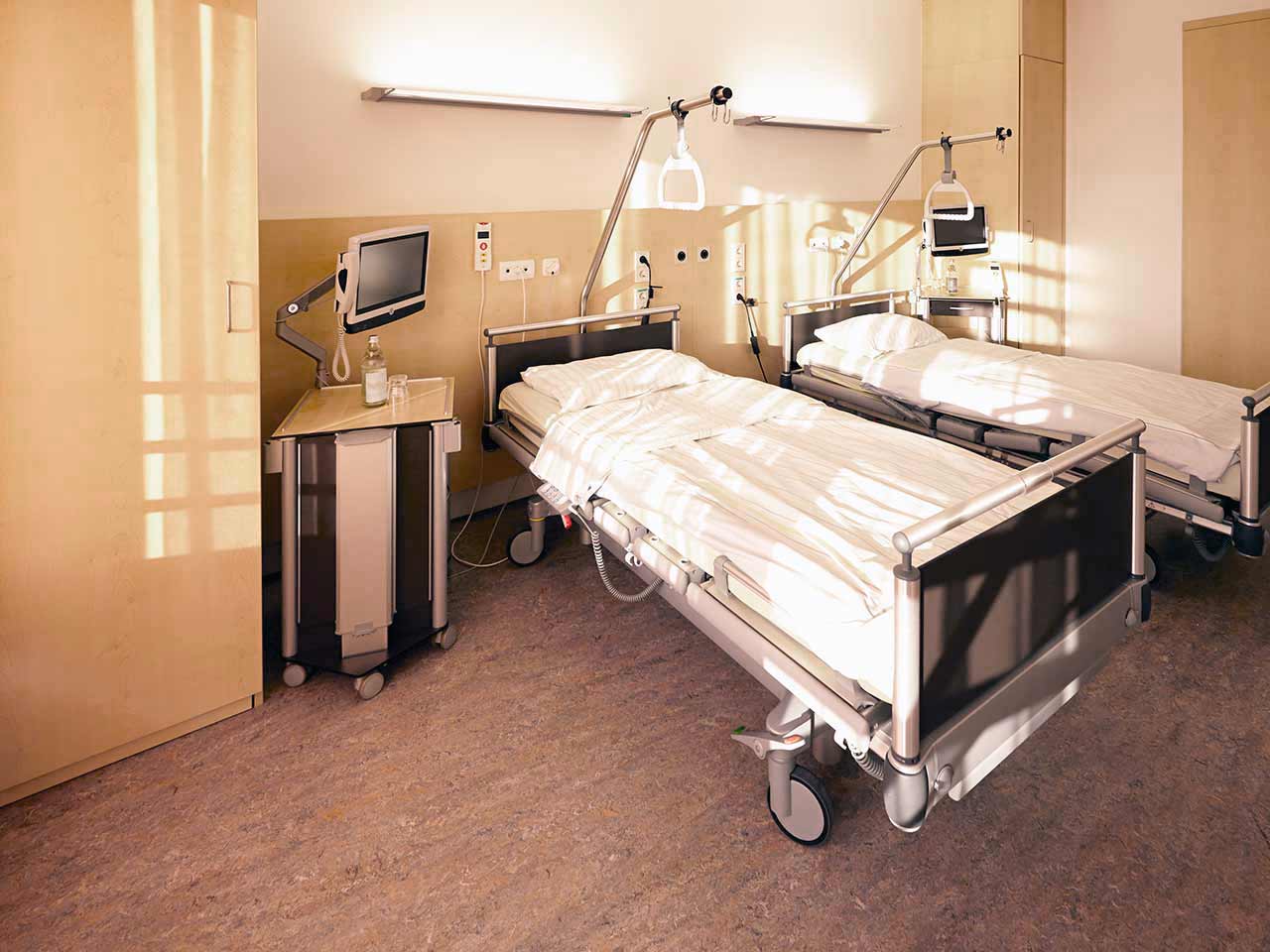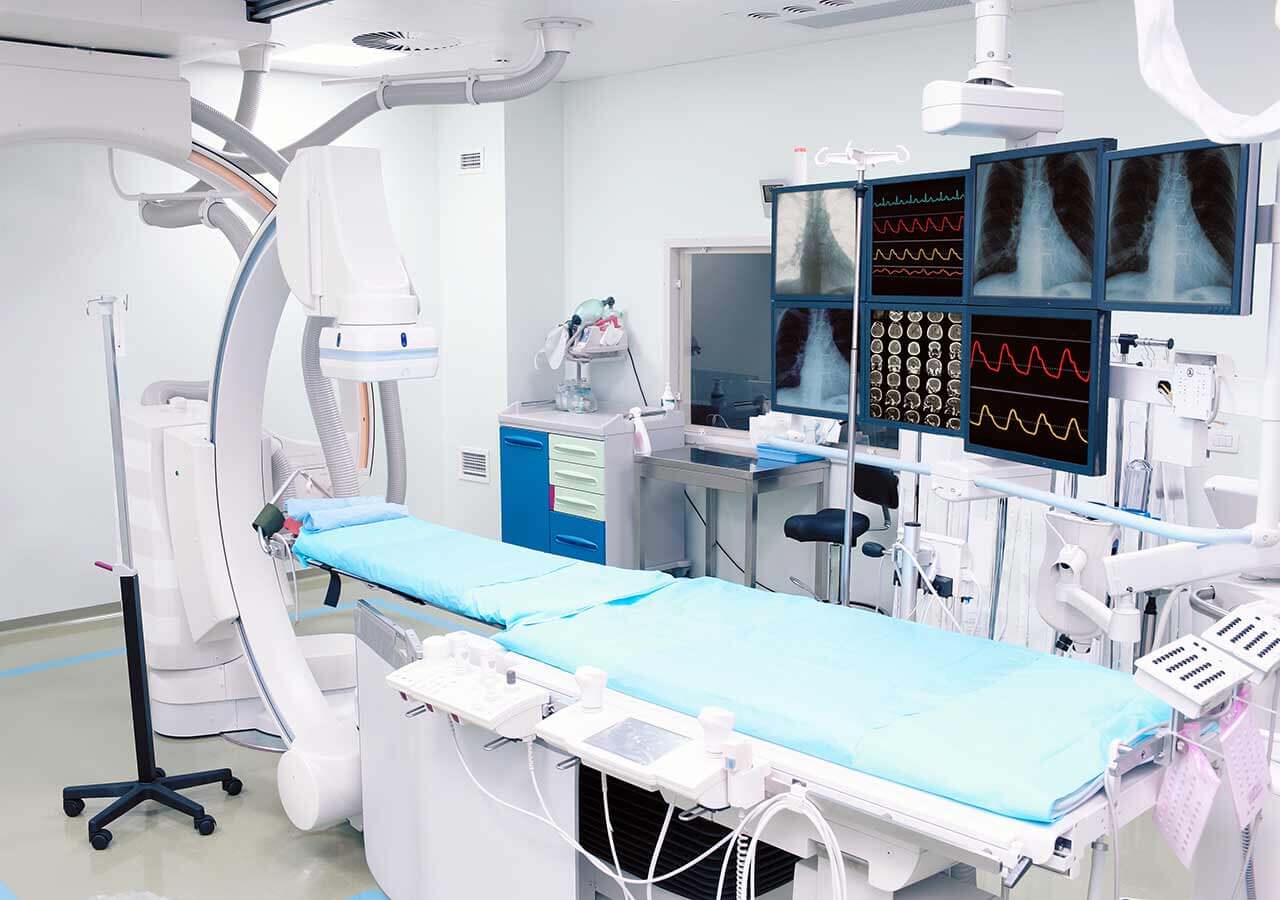
The program includes:
- Initial presentation in the clinic
- clinical history taking
- review of medical records
- physical examination
- ophthalmological examination:
- slit lamp examination
- pupil examination
- ocular motility examination
- ophthalmoscopy
- perimetry (visual field test)
- computer perimetry
- visometry (without correction and with correction)
- keratometry
- pachymetry
- refractometry (objective, subjective, cycloplegic)
- autorefractometry
- non-contact tonometry
- fluorescein angiography (if indicated clinically)
- optical coherence tomography OCT (if indicated clinically)
- gonioscopy
- photokeratoscopy
- doppler ultrasound of the retinal vessels
- nursing services
- consultation of related specialists
- treatment by chief physician and all leading experts
- explanation of individual treatment plan
Service
You may also book:
 BookingHealth Price from:
BookingHealth Price from:
About the department
The Department of Adult and Pediatric Ophthalmology at the University Hospital Jena covers the entire range of surgical and conservative ophthalmology. Of particular interest to the department's specialist are the diagnostics and treatment of cataract, glaucoma, macular degeneration, retinal detachment, diabetic retinopathy, etc. Also, the scope of tasks includes the treatment of neuro-ophthalmologic diseases, correction of strabismus in adults and children. The department treats more than 3,000 inpatients and more than 20,000 outpatients every year. The department's doctors have innovative laser techniques, which allow them to improve and maintain vision without complex therapeutic manipulations. The Chief Physician of the department is Prof. Dr. med. Daniel Meller.
The department has excellent experience in cataract treatment. The drug treatment of this pathology often does not yield a positive dynamics, therefore, the patients with cataracts require a surgical intervention. During the operation, the surgeon removes cloudy lens and replaces it with an artificial one. The ophthalmologists have in their arsenal various techniques to perform the operation, but the best option is selected for each patient individually based on the thorough diagnostic examination. All artificial lenses (monofocal and multifocal) used in the clinical practice are made of high-quality materials (for example, polymethyl methacrylate, silicone, acrylic) and provide good vision at a distance and in close proximity. The surgery is often performed under local anesthesia. In children, as well as in certain clinical situations in adults, general anesthesia is required.
Glaucoma treatment is also an important focus of the department’s work. In many cases, the drug therapy is enough (the use of special eye drops), but complicated glaucoma require the surgical intervention using classical surgical techniques or laser technologies. For example, glaucoma is mostly treated using such types of interventions as laser trabeculoplasty, trabeculotomy, viscocanalostomy, cyclodestructive procedures (cyclocoagulation, cyclophotocoagulation), iridectomy, etc.
In addition, the department has an orthoptic room, which experts specialize in the correction of strabismus in patients of all age groups. The treatment of strabismus in children is carried out by the specially trained doctors.
The service range of the department includes:
- Diagnostics and treatment of cataract
- Intracapsular cataract extraction Extracapsular cataract extraction
- Phacoemulsification
- Diagnostics and treatment of glaucoma
- Conservative therapy (use of eye drops)
- Surgical techniques
- Laser trabeculoplasty
- Opening of the scleral venous sinus
- Trabeculectomy
- Viscocanalostomy
- Fistulizing operation (trabeculectomy)
- Cyclococoagulation
- Cyclophotocoagulation
- Iridectomy (surgical technique using special scissors or laser)
- Diagnostics and treatment of age-related macular degeneration
- Drug therapy
- Argon laser therapy
- Photodynamic therapy
- Intravitreal injections
- Surgical treatment
- Diagnostics and treatment of retinal detachment
- Surgical treatment
- Diagnostics and treatment of diabetic retinopathy (including in pregnant women)
- Argon laser coagulation of the retina
- Diagnostics and treatment of retinal vascular occlusion
- Diagnostics and treatment of ametropia
- Selection of the right glasses
- Selection of right contact lenses
- Surgical correction
- Diagnostics and correction of strabismus in adults and children
- Conservative methods (use of special patches, eye drops, etc.)
- Selection of the right glasses
- Surgical correction of strabismus
- Diagnostics and treatment of keratoconus (cross-linking)
- Diagnostics and treatment of neuro-ophthalmologic diseases
- Diagnostics and treatment of corneal endothelial dystrophy (an innovative treatment method DMEK (descemet membrane endothelial keratoplasty))
- Diagnostics and treatment of tumors of the eye and its appendages
- Diagnostics and treatment of diseases of the eyelids and lacrimal ducts
- Other ophthalmic diseases, diagnostic and therapeutic options
Curriculum vitae
- Study of Medicine at the Ruhr University Bochum.
- Internship in the Department of Ophthalmology at the University Hospital Bonn.
- Three-year scientific internship at the Basque Palmer Eye Institute at the University of Miami.
- Since 2000 Senior Physician, Department of Ophthalmology, University Hospital Essen.
- Since 2015 Professor of Ophthalmology and Head of the Department of Adult and Pediatric Ophthalmology at the University Hospital Jena.
Photo of the doctor: (c) Universitätsklinikum Jena
About hospital
According to the prestigious Focus magazine, the University Hospital Jena regularly ranks among the top German medical facilities!
The hospital has positioned itself as a multidisciplinary medical facility with a long history of more than 200 years. Since its foundation, the hospital has been constantly developing and modernizing, thanks to which nowadays it offers patients the highest level of treatment in Germany based on the use of innovative technologies and the very latest therapeutic techniques. The hospital consists of 26 specialized departments and 25 research institutes. It treats more than 53,600 inpatients and about 274,000 outpatients every year. The staff of the hospital includes more than 5,600 competent doctors.
The extensive resources of the university hospital, high treatment standards, and the introduction of new research developments provide first-class treatment in Germany meeting the stringent international standards. The hospital has an excellent reputation not only in Germany, but also far beyond its borders, due to which it accepts a large number of foreign patients for the diagnostics and treatment.
Despite the technical progress and the availability of accurate computerized systems, the patient’s physical health and emotional state is the main value of each employee of the hospital, since some diagnoses cause emotional distress in patients. The doctors of the hospital believe that the key to a successful result is a comprehensive and individual approach, so they spend a lot of time talking with patients, listen carefully to all their wishes and support at all stages of the therapeutic process. All this in combination with high-precision diagnostic techniques and the very latest types of therapy forms a solid basis for the achievement of an optimal treatment result.
Photo: (c) depositphotos
Accommodation in hospital
Patients rooms
The patients of the University Hospital Jena live in comfortable single and double rooms made in a modern design. Each patient room is equipped with an ensuite bathroom with shower and toilet. The room has enough space to store personal belongings, as well as a table and chairs for receiving visitors. A bedside table can be converted into a table so that patients can eat right in their bed. Each room has a TV, and there is also access to the Internet. In addition, the hospital offers enhanced-comfort rooms.
Meals and Menus
The patient and his accompanying person have a daily choice of three menus. If for some reason the patient does not eat all the foods, he will be offered an individual menu. Please inform the medical staff about your dietary preferences prior to the treatment.
Further details
Standard rooms include:
Religion
Religious services are available upon request.
Accompanying person
During the inpatient program, an accompanying person may stay with you in a room or at the hotel of your choice.
Hotel
During the outpatient program, you can live at a hotel of your choice. Managers will help you to choose the most suitable options.





